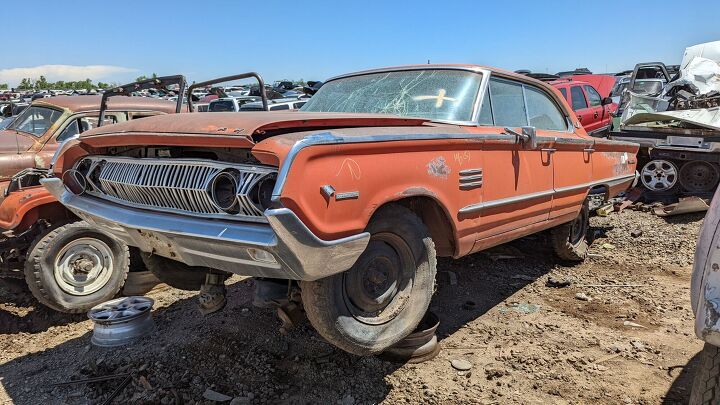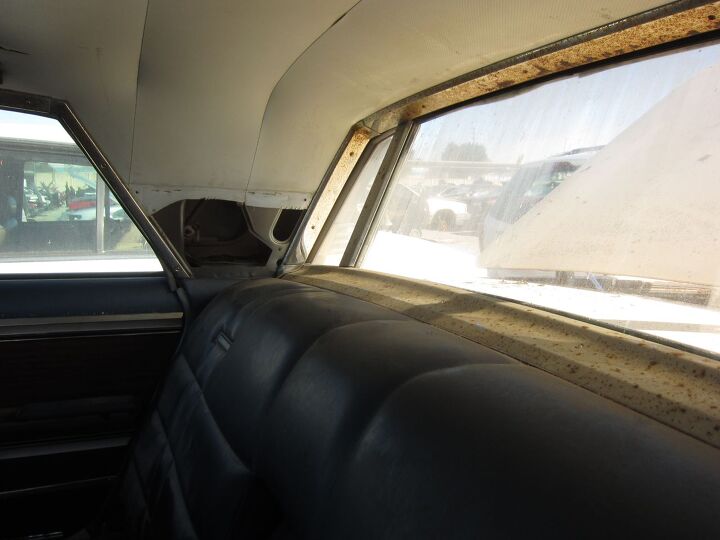#MercuryParkLane
Junkyard Find: 1964 Mercury Montclair Four-Door Hardtop Marauder
Here's a car trivia question for you: what engine name went on to become the designation for a body style and then a car model name in its own right? The answer is, of course, Marauder.
Junkyard Find: 1965 Mercury Park Lane Breezeway
Of all the crazy ideas to come out of Dearborn in the 1960s, the Breezeway option on big Mercury cars is one of my favorites. You had a rear-canted back window that rolled up and down, providing a hurricane of wind through the car at speed, and no doubt enhancing the passengers’ intake of Vitamin CO. It made no sense, but so what? Not surprisingly, mid-60s Montereys and Park Lanes (the Mercury-ized Ford Galaxie), aren’t worth much in beat condition these days (nice ones are another story), but I still wasn’t expecting to find this one in a Northern California wrecking yard last month.
















Recent Comments